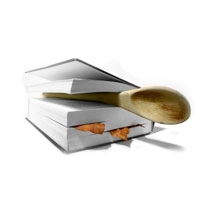I have a nuWave oven and needed this recipe.
Рецепт How to Use a NuWave Oven to Dehydrate
Drying foods has grown more sophisticated over time, but the principle remains the same: When foods are dehydrated, microorganisms such as mold, yeast and bacteria can't grow in them so they don't spoil. Dried foods are ideal for backpacking, camping, or any time you want a quick and nutritious snack on the go. The NuWave Oven, a 14-inch infrared oven that sits on the countertop, makes dehydrating quicker than ever.
Ингредиенты
- CONDITIONING: 1. If you dried fruit, herbs, or seeds, you should condition them before storing, advises the University of Missouri Extension. To condition, or evenly distribute the remaining moisture in the food, first completely cool the dehydrated food.
- 2. Pour the dehydrated food into a large, nonporous container. Fill it no more than two-thirds full. Cover the container and keep it warm and dry.
- 3. Shake or stir the container daily to mix the contents. If you see any condensation on the lid, return the food to the NuWave Oven to finish dehydrating (and then begin the conditioning process again). Check also for spoilage. Discard the product if you see any signs of mold.
- 4. Continue stirring or shaking the container for 10 to 14 days. Look for condensation and spoilage each time.
- 5. Cool the dehydrated product thoroughly and package in small, airtight containers. Maintain the nutritional value, appearance and flavor of dried foods by storing them at low temperatures in low humidity.
Инструкции
- 1. Rinse fruit or vegetables with water, cut away any bruised parts, remove seeds or pits, and slice thinly. Steam fruit or vegetables, if needed, to blanch them prior to drying. Steam-blanch fruit such as pears, peaches, nectarines, bananas, apricots and apples, as well as vegetable like carrots, pumpkin, peas and potatoes. After steaming, place the product in cold water and drain.
- 2 Place a single layer of thinly sliced vegetable, fruit or meat on the NuWave drying rack. Remember that you want to allow for airflow between each piece.
- 3. Set the NuWave Oven power level to low--125 F--and set the rack of food inside.
- 4. Allow the food to dry until sufficient moisture has been removed. Drying times will vary depending on the amount of food, the food's moisture content and current air temperature and humidity.
- 5. Test a small piece of food when you think it has dried enough. Remove an average-size piece of the food you are drying from the NuWave. Allow it to cool completely and then look for the characteristics described.
- Herbs: Brittle, with leaves that shatter when crushed
- Fruits: No moisture can be squeezed out, tough and pliable when cut
- Vegetables: Leathery or brittle; leathery vegetables will spring back when folded and have sharp edges, brittle vegetables (such as peas or corn) will shatter when hit with a hammer
- Meat: Must be extremely dry -- it should be dark and fibrous, forming sharp points when broken
Полезные ссылки
Languages
Nutrition Facts
| Amount Per Recipe | %DV |
|---|---|
| Recipe Size 0g | |
| Calories 0 | |
| Calories from Fat 0 | 0% |
| Total Fat 0.0g | 0% |
| Saturated Fat 0.0g | 0% |
| Trans Fat 0.0g | |
| Cholesterol 0mg | 0% |
| Sodium 0mg | 0% |
| Potassium 0mg | 0% |
| Total Carbs 0.0g | 0% |
| Dietary Fiber 0.0g | 0% |
| Sugars 0.0g | 0% |
| Protein 0.0g | 0% |
Отзывы
Комментарии

Loading older comments, please wait...




